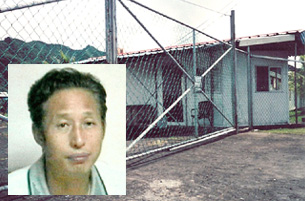
ANATOMY
OF AN INTERNATIONAL HUMAN TRAFFICKING CASE, PART 1
Kil Soo Lee and the Case of the Samoan Sweatshop
07/16/04
Want a specific reason
why the FBI continues to develop its global reach, equipped with the analytic
capabilities, linguistic skills, financial acumen, law enforcement partnerships,
and worldwide offices needed to disable sophisticated international criminal
and terrorist threats?
Then consider the case
of Kil Soo Lee (shown in the above picture), convicted
of enslaving more than 250 garment workers in his factory in American Samoa.
It all started
in the late 1990s, when Lee crafted a ruthless business plan
to mass produce clothes for top U.S. retailers.
Step 1: Lee
built his factory on a remote island of American Samoa, an unincorporated
U.S. territory 2,300 miles south of Honolulu. That way, he could use the "Made
In America" label on his clothes but not draw attention to his operation.
Step 2: He
recruited more than 250 skilled garment workers from Vietnam and China,
mostly young women, enticing them with promises of a steady job that could
help support their children and families back home. To guarantee this new
job in America, he demanded an exorbitant down payment of as much as $6,000
from each worker.
Step 3: When
the employees arrived, he placed them on grueling schedules in horrid conditions
and paid them next to nothing. Then, he kept the workers in line through
threats, beatings, starvation, false arrests, sexual assaults, debt repayment
schemes, deportation, and other tactics -- all enforced by security guards
in a gated compound (one section is pictured above).
In time, though, the
dark underbelly of this Samoan sweatshop came to light:
- One
employee, while returning from a visit of jailed co-workers, took an "SOS" note
and threw it out of the window of the company car. The note was found
and passed on to the Department of Labor (DOL). After investigating,
DOL levied fines and ordered Lee to pay back wages. (Since Lee was
strapped for cash, DOL wrote the checks, but Lee forced his workers
to give him the money and he deported those who didn't.)
- In
November 2000, Lee ordered his guards to beat or kill any workers who
weren't producing clothes fast enough. A mass attack ensued; one woman
had her eye gouged out with a pipe. Word of the beatings reached law
enforcement, and in February 2001, FBI Agents in Honolulu launched
a massive investigation.
Monday,
we'll detail what it took for the Bureau and its partners to make the case
against Kil Soo Lee and to help the victims of his brutal scheme.
